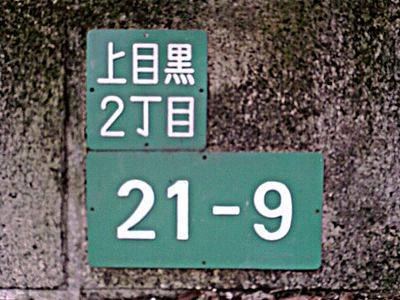For years, the phrase “where the streets have no name” has always brought to mind one of my favourite songs by the rock band U2. After today, however, it will remind me of something else as well.

While listening to a discussion on Tim Ferriss’ podcast, guest Derek Sivers mentioned something about the streets in Japan that grabbed my attention: most of them don’t have names! Apparently, for the Japanese, most streets are nameless spaces between the blocks of houses, buildings, etc. Instead, the Japanese give numbers to the blocks. Each building within a block has its own building number. (See an example in the photo on the right from Wikipedia.)
At first, this convention struck me as utterly confusing. But as I thought about it, I became intrigued and did some digging. Sivers has written this post (with maps examples) that explains the phenomenon simply and clearly. Here’s another post on the same subject.
If you would rather hear Sivers explain it himself, just watch the first minute or so of this two-minute talk that he gave at TED India in 2009.
I have not yet been to Japan—it is on my list of countries to visit—but I can well imagine how confusing this classification system must be for anyone who, like me, has lived in locations where streets have names. And now, I can also imagine the confusion that some Japanese experience when traveling abroad for the first time.
This issue got me thinking about presentations and I believe that a useful parallel can be drawn. Just as Canadians and Japanese do not necessarily look at street addresses the same way, so too an audience (or different members within an audience) will not necessarily look at a presentation the same way the speaker does.
For example, suppose a CEO announces that the company is going to invest millions of dollars to automate a process that will increase production once completed. Potential suppliers will be delighted at the prospect of a lucrative contract; employees might be fearful for their jobs; shareholders might be enthusiastic about the prospect of greater profitability or nervous about the company spending so much money in an uncertain economy. The list could go on, but the point is that not everyone is going to regard the initiative in the same way as the CEO.
Remember this the next time you have a presentation. Perhaps your audience will be familiar with the topic and will also be on the same page as you. But perhaps not. It might be a new subject for them; they might be confused or doubtful or opposed to your ideas. Knowing that your audience might not see things the same way you do is one of the best incentives that you have to prepare thoroughly. Think long and hard about your message, how to get it across and why the audience should care.
Remember, it’s always about the audience. Speakers need to adapt their presentation for the audience just as visitors to Japan must adapt the way in which they navigate around Japanese towns and cities.
To close this post, a flashback. We return to 27 March 1987 at the corner of 7th and Main Streets in Los Angeles. It was then and there that U2 surprised a lot of people by performing Where the Streets Have No Name on the top of the Republic Liquor store. I do love this song!
















2 Replies to “Where the streets have no name”
Thanks for the introduction to the U2 song and video. They knew that it was all about the audience.
They sure did. Thanks for the comment.